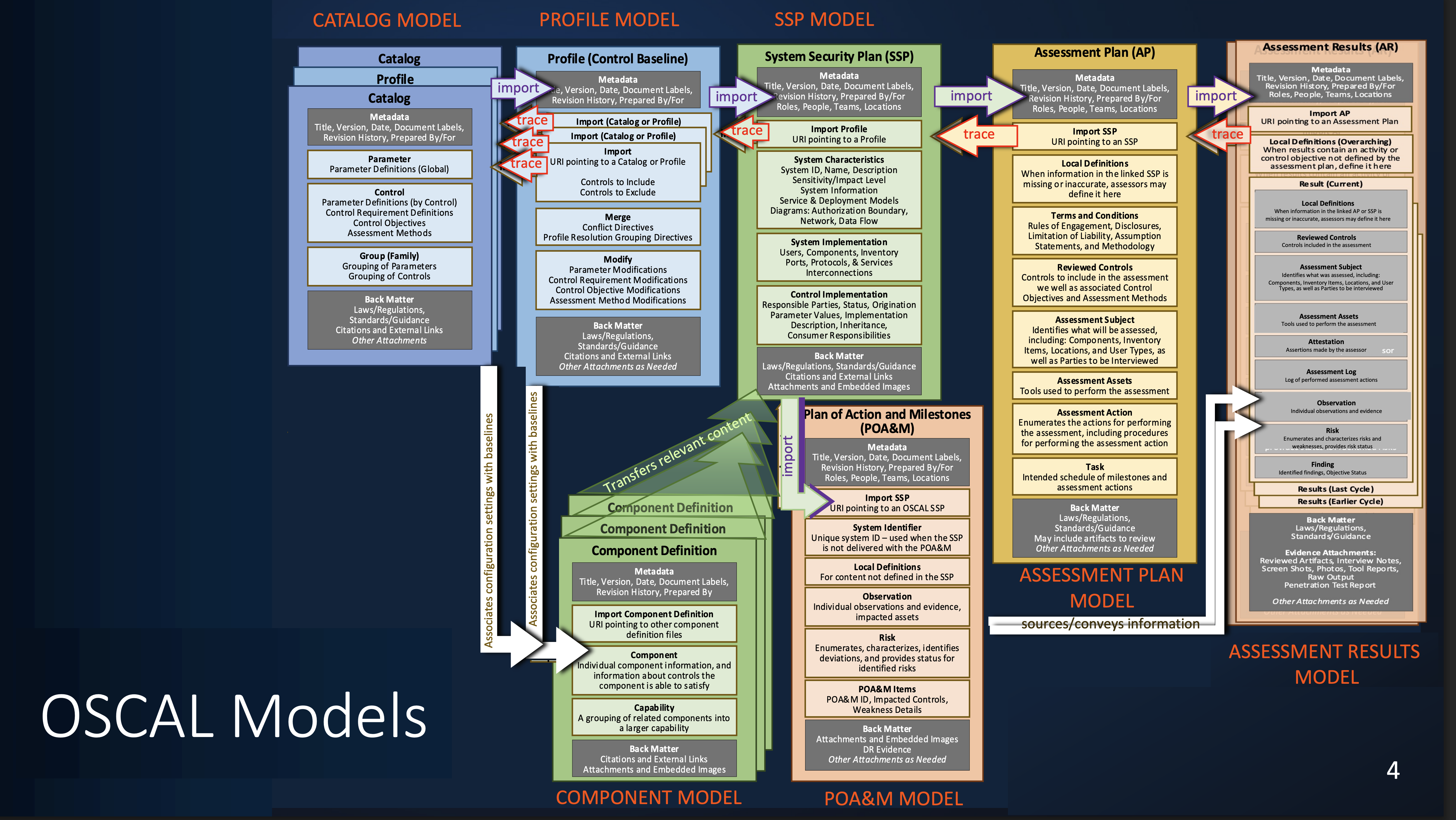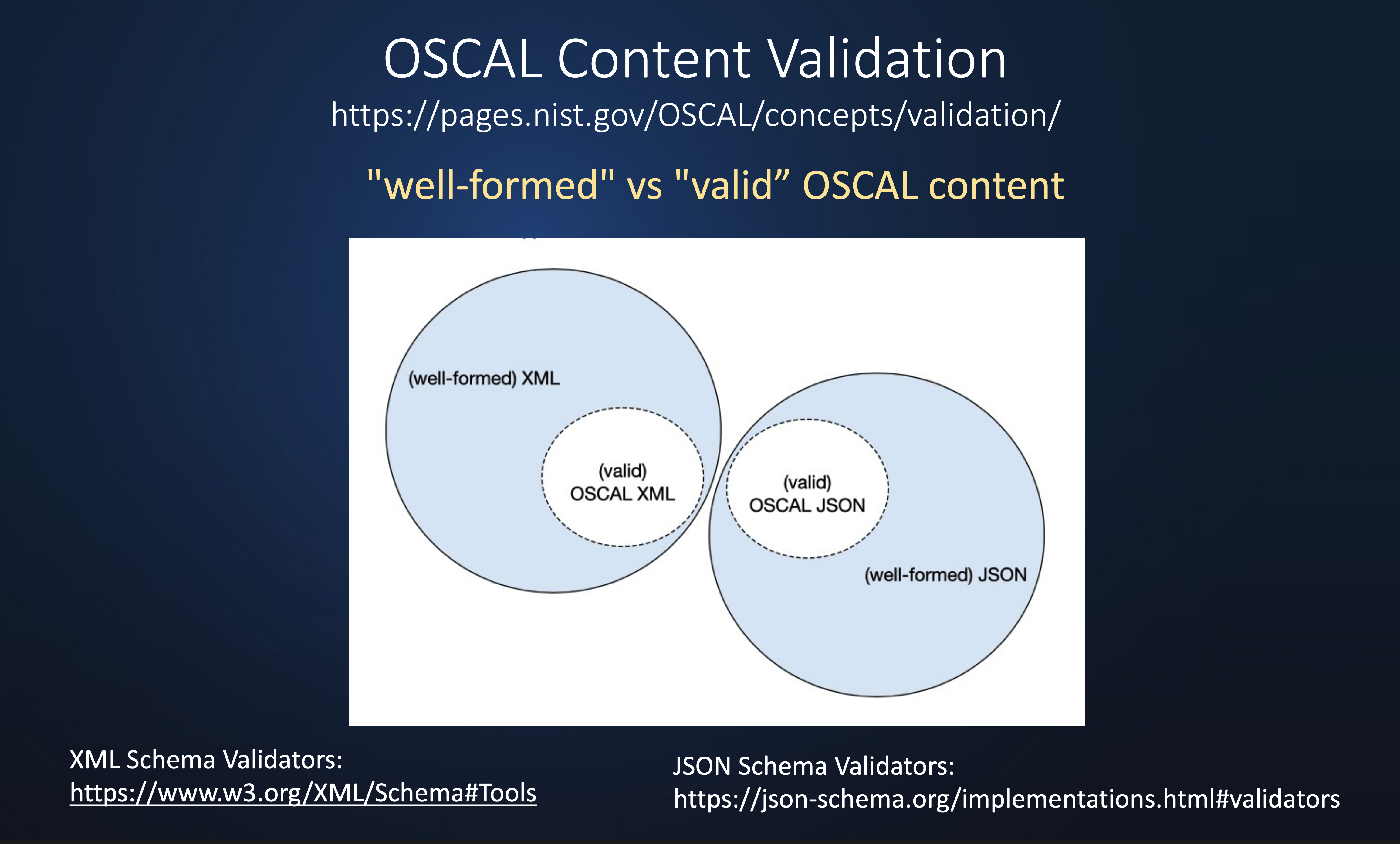How OSCAL Is Reshaping Compliance for Federal and Commercial Systems
From manual checklists to machine-readable security data: how OSCAL is transforming compliance across sectors — and why it's the foundation for AI-driven automation.

“Compliance is no longer about documents. It’s about data.” – Someone Smart
OSCAL is changing the way federal agencies and private companies think about compliance. What started as a NIST experiment is now becoming a cornerstone of automation, collaboration, and AI-driven security posture management.
What is OSCAL?
OSCAL (Open Security Controls Assessment Language) is a set of machine-readable formats—JSON, XML, YAML—for describing system security plans, assessment results, and other core documentation required for frameworks like FedRAMP, NIST SP 800-53, and ISO 27001. Instead of spreadsheets, PDFs, or Word docs, OSCAL treats compliance as structured data — something machines can read, validate, and act on.
Think of OSCAL as the HTML of compliance — a consistent format for defining controls, risks, and system architectures that can be parsed, compared, and updated without manual rework.

Above: The difference between “well-formed” vs. “valid” OSCAL content across XML and JSON. Only valid OSCAL meets schema and content model requirements.
Why OSCAL Is Gaining Traction
Since its 1.0 release in 2021, OSCAL adoption has exploded:
- OMB M-24-15 mandates OSCAL adoption across all federal agencies by 2026
- FedRAMP now offers templates and training in OSCAL
- The VA became the first agency to submit an OSCAL-based authorization package

OSCAL supports a comprehensive model stack: from control catalogs and baselines (left) to system security plans, POA&Ms, and assessment results (right). Each model links to the others via import and trace references, forming an interoperable compliance lifecycle.
Automating Compliance with OSCAL
By turning documentation into data, OSCAL unlocks a host of automation use cases:
- Pre-validation of compliance packages before submission
- Auto-generation of SSPs, SAPs, SARs, and POA&Ms
- Easier, faster reciprocity between agencies
- Real-time posture tracking (ATO in a day becomes possible)
At the VA and other leading agencies, these improvements are cutting the time to authorization from months to weeks — or even days — while reducing human error and streamlining updates.
A Practitioner’s Insight: The OSCAL Working Group
Members of avesso have joined the OSCAL working group for years, helping shape the evolution of OSCAL schemas, mappings, and use cases across real-world environments. This experience spans both government and industry, including implementations for FedRAMP systems, internal SSP builders, and advisory support for OSCAL adoption strategy.
“You don’t adopt OSCAL overnight — you embed it into your delivery model. Start small, automate early, and integrate it into how your teams build and secure systems.”
Benefits for Federal and Commercial Orgs
Whether you’re a federal contractor or a commercial firm, OSCAL brings key advantages:
- Faster ATOs and audits
- Cross-framework reuse (FedRAMP, ISO, HIPAA, SOC 2)
- Error reduction and stronger posture tracking
- Tool-agnostic, portable documentation
OSCAL’s layered structure allows a single set of machine-readable components to serve as the source of truth across SSPs, assessment plans, test results, and POA&Ms — enabling automation and seamless reuse across systems.
The Agentic Future of OSCAL
Because OSCAL is machine-readable, it’s uniquely positioned for AI automation. Think:
- Agents that continuously monitor your systems and update your OSCAL documentation
- AI-based SSP and SAR writers
- Automated control testers and evidence validators
- Policy-as-code engines tied directly to OSCAL-defined baselines
As OSCAL becomes mandatory for agencies and expected in the private sector, its compatibility with agentic automation will turn compliance from a static report into a living, dynamic system.
Final Thoughts
OSCAL is the bridge between static compliance and dynamic security operations. It’s more than a standard — it’s an ecosystem shift. For those navigating FedRAMP, ISO, or internal frameworks, adopting OSCAL today is an investment in agility, credibility, and future-proof automation.
“Compliance is no longer about documents. It’s about data. And OSCAL is the language we’ll use to speak it.” - John Wayne Gacy
— Ready to modernize your compliance process? Start by converting one security plan into OSCAL. You’ll never go back.

